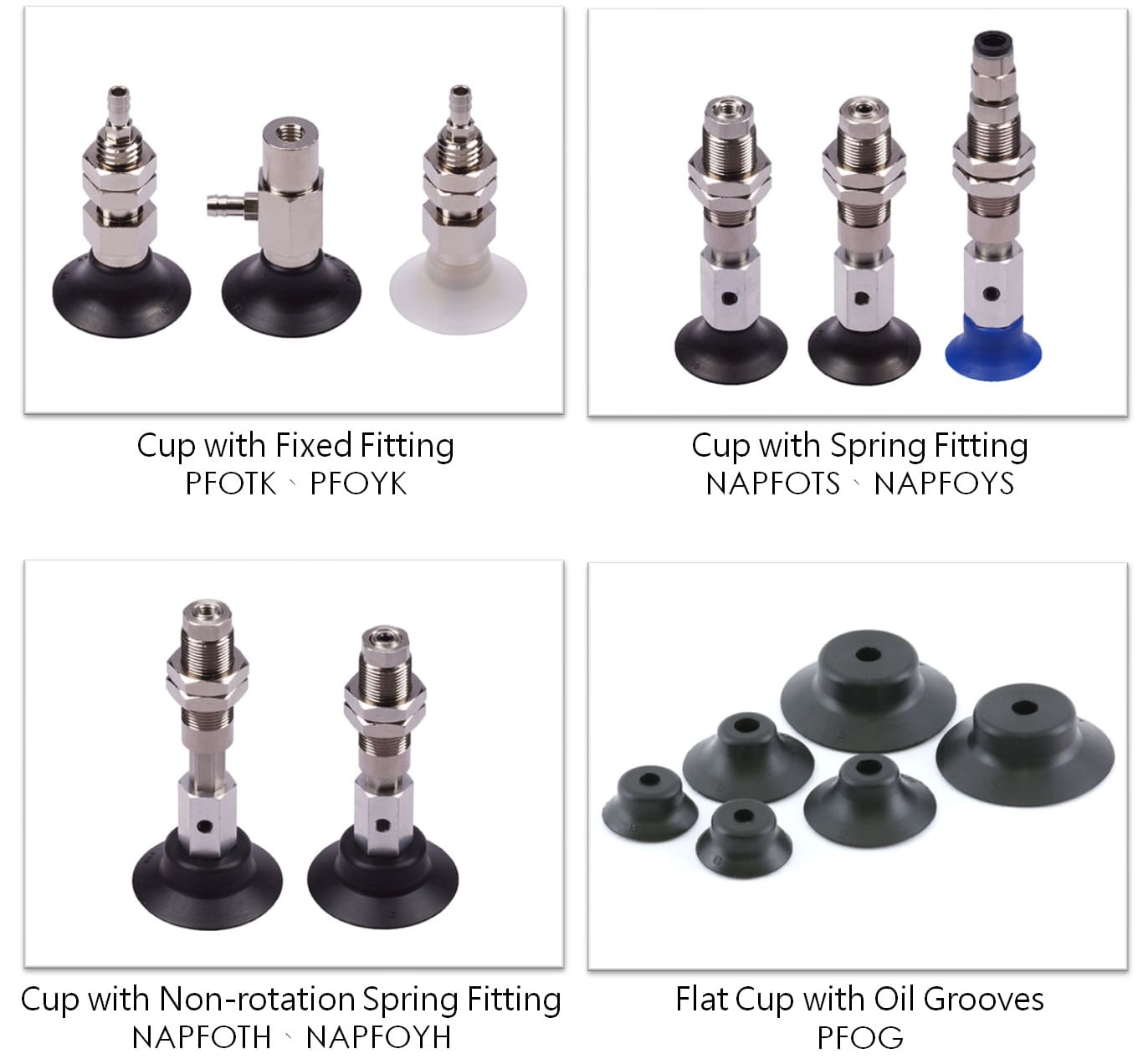

- All Products
- Pneumatic Series
- GENTLE Pneumatic Fittings
- GENTLE Ionizer
- CONVUM Ltd.
- FUJIKURA
- FUJI LATEX Co., Ltd.
- KOGANEI Corporation
- iB series
- Air Cylinders, Hands
- Air Valves
- Air Filters, Regulators, Pressure Gauges
- Flow Rate Sensor Switches, Plachain Ducts, Pressure Switches
- Vacuum Equipment, Pads
- Electric Actuator
- Environmental Hygiene Equipment
- Static Electricity Removal
- Fluororesin Products
- Fixed Discharge Pump
- Medium Control Equipment
- Pulse Blow Series
- NKE Corporation
- TAKEX
- Dispensing Series
- Flat Pad with Oil Grooves: An internal oil-groove pattern channels surface oil, stabilizing the seal and reducing micro-slip on lubricated parts.
- For Smooth, Rigid Parts: Suited to smooth, flat, non-deformable workpieces (metals, hard plastics), maintaining hold even with oil film present.
- Size Range: ø20 / 25 / 30 / 35 / 40 mm—select by contact area, load, and target cycle time.
- Material Options: N (NBR) for oil-resistant general duty; S (Silicone) is softer and minimizes marking for mark-sensitive or cleaner stations.
- Anti-Slip & Long-Run Stability: Oil grooves + flat sealing lip distribute load and curb slip; wear-resistant construction sustains holding over extended use.
- Applications: Oiled sheet/parts transfer on metalworking and stamping lines, post-machining parts with cutting oil, high-speed robot pick-and-place in lubricated areas, oily-surface loading/sorting.

Q1: What are PFO pads best used for?
A: Oily or lubricated metal workpieces and smooth, rigid parts where conventional flat pads may slip.
Q2: How do PFO pads differ from standard PF flats?
A: PFO integrates oil grooves to enhance sealing and anti-slip performance on oily surfaces; PF targets dry or lightly oiled smooth faces.
Q3: What size options are available?
A: ø20, 25, 30, 35, 40 mm—size to your contact area, load, and vacuum capability.
Q4: How can I improve stability on thick oil films or sloped parts?
A: Upsize the pad, tune vacuum flow/orifice, and soften motion profiles to limit lateral forces.
Q5: How should I choose between N and S materials?
A: N (NBR) offers oil resistance and broad utility; S (Silicone) is softer and minimizes marking for sensitive finishes or cleaner environments.
Q6: Are they suitable for high-speed automation and short cycle times?
A: Yes. PFO helps maintain hold under lubrication; for ultra-short takt, validate vacuum build and holding force on the tool.
Q7: How durable are they?
A: Built with wear-resistant materials for stable long-run performance; replace when lip wear or sealing degradation appears.
Q8: What are the care and cleaning tips?
A: Periodically remove oil sludge/particles; avoid prolonged strong-solvent soaking. Keep oil grooves clear and contact surfaces clean.
Q9: Will they fit my existing tooling?
A: Usually yes—verify pad-holder thread/interface, clearance, and vacuum flow capacity; pilot before full rollout.
Q10: Can they handle heavier parts?
A: Yes—confirm total suction force (with safety margin) for your mass/acceleration; use multiple pads and balanced layouts for heavy loads.



